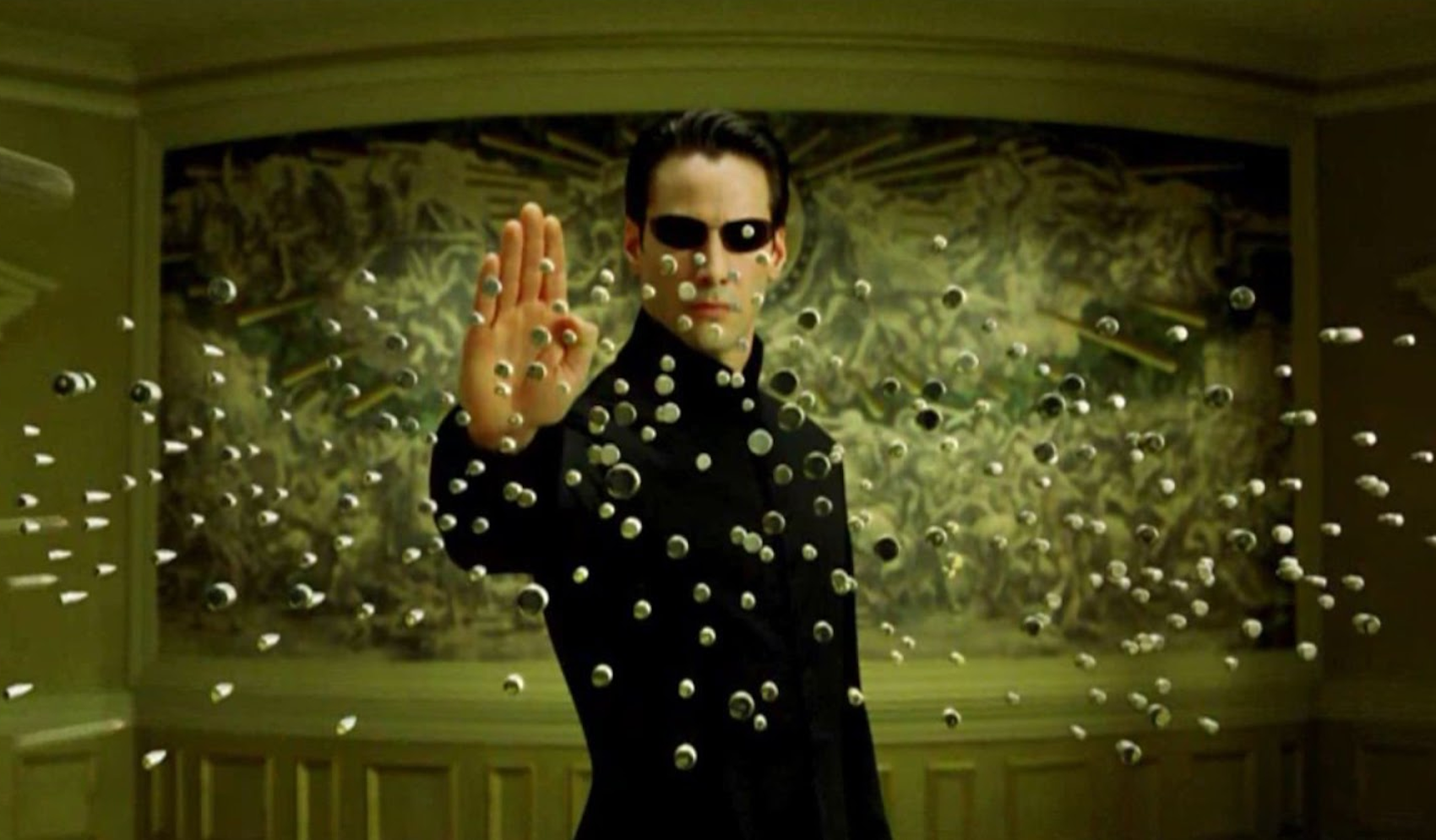Upon its 1999 debut, ‘The Matrix’ captivated both viewers and reviewers, offering a film experience that revolutionized action cinema. Under the direction of Lana and Lilly Wachowski, ‘The Matrix’ went beyond simple entertainment; it reshaped visual narratives, technical benchmarks, and intellectual profundity within the action category. A review of its impact demonstrates how this unique endeavor initiated a fundamental change, motivating directors globally, altering what audiences anticipated, and establishing itself as a foundational touchstone for future eras.
A New Language of Visual Effects
At the heart of ‘The Matrix‘ revolution lies its groundbreaking approach to visual effects, particularly what became known as bullet time. This technique simulated a scene in which the action appears to unfold in surreal slow motion while the camera seems to move at normal speed around the subject. Achieved through a combination of high-speed photography, motion-controlled cameras, and sophisticated digital compositing, bullet time provided audiences with perspectives previously unimaginable. The iconic sequence where Neo, played by Keanu Reeves, dodges oncoming bullets in a fluid arc became a cinematic touchstone. Filmmakers across Hollywood and beyond immediately sought to emulate and adapt this effect, from ‘Charlie’s Angels’ to video games like ‘Max Payne,’ embedding the technology and its aesthetic into the popular consciousness.
Innovative Choreography and the Integration of Martial Arts
Before ‘The Matrix,’ action choreography in Hollywood typically emphasized raw power or direct gunfights. Nevertheless, the Wachowskis enlisted the renowned Hong Kong fight choreographer Yuen Woo-ping to instruct the actors in wire-fu and various martial arts methods. This blend of Eastern and Western styles resulted in graceful, anti-gravity combat sequences previously unseen in Western action movies. The characters engaged in battles with a level of accuracy and grace reminiscent of wuxia films, yet these scenes were integrated into a cyberpunk, American storytelling framework. This partnership sparked a movement: Western film productions increasingly sought out Asian choreographers and their methods, evident in series such as ‘Kill Bill,’ ‘Crouching Tiger, Hidden Dragon,’ and ‘John Wick,’ elevating the genre beyond mere physical altercations to intricately designed ballets of aggression.
Philosophy and Mythology: An Intellectual Aspect
‘The Matrix’ stood apart not just for its visuals, but for intertwining action with philosophical and existential questions. The narrative invited audiences to contemplate reality, free will, and identity, drawing inspiration from thinkers like Jean Baudrillard and motifs from myth and religion. The oft-quoted red pill/blue pill dilemma offers a succinct symbol for the film’s existential stakes. By embedding dense metaphysics within its high-octane sequences, ‘The Matrix’ encouraged other filmmakers to add intellectual rigor and thematic substance to genre cinema, paving the way for more ambitious storytelling in films like ‘Inception’ and ‘Blade Runner 2049.’
Technological Integration and World-Building
A noteworthy innovation was the film’s seamless integration of digital technology into both its narrative and production design. ‘The Matrix’ depicted a world where the boundaries between human experience and digital construct were fluid, anticipating conversations about virtual reality and simulation theory. Visual motifs such as the cascading green code and stark architectural minimalism became not only iconic but also reflective of the film’s underlying themes about perception and control. In this way, action was not merely spectacle, but inherently tied to the film’s world-building and emotional stakes. Many subsequent films and series, from ‘Minority Report’ to ‘Westworld,’ have adopted this model, intertwining technology and action to deepen storytelling.
Audio, Post-Production, and Visual Harmony
The influence of ‘The Matrix’ also encompasses its sound environment and editing approach. The movie’s audio design, distinguished by high-pass filtered gunshots, digitally altered punches, and the creative application of quiet, heightened both suspense and authenticity. The musical composition by Don Davis blended electronic sounds with orchestral grandeur, representing a shift from conventional action film scores. The employment of quick-cut editing—skillfully arranging spatial relationships even in intricate sequences—established a benchmark for lucidity amid disorder. This careful construction guaranteed that the visual display did not obscure understanding of the story, a problem common in numerous previous action scenes.
Fostering Diverse Storytelling and Inclusive Talent Selection
Another dimension of ‘The Matrix’s’ legacy is its progressive approach to character identity. While not overt at the time, subsequent analysis and interviews have highlighted themes of transformation, choice, and non-conformity that resonate with marginalized identities, including trans narratives—a reflection of the Wachowskis’ own lived experiences. The film’s diverse casting, particularly Laurence Fishburne as Morpheus, broke ground for more inclusive representation in genre cinema, broadening the emotional and demographic reach of action films.
Box Office Legacy and Industry Impact
The success of ‘The Matrix’ was not merely artistic but also commercial. Grossing over $460 million worldwide against a $63 million budget, it demonstrated a robust appetite for innovative action features. Immediate industry response included a surge in high-concept, effects-driven blockbusters, an increased investment in digital post-production, and a new willingness to support auteur-driven projects with ambitious philosophical underpinnings. Major studios accelerated research and adoption of green screen technology, motion capture, and digital compositing, rapidly evolving the toolkit available for the genre.
Lasting Impact and Societal Significance
Twenty years following its debut, the influence of ‘The Matrix’ is clearly evident in modern action films. Expressions such as “I know kung fu” and “the Matrix” itself have become common terms to describe profound, transformative experiences. This movie sparked extensive academic studies, fan interpretations, and numerous artistic tributes, ensuring its enduring cultural relevance across various platforms and age groups.
Annually, ‘The Matrix’ consistently acts as a foundational model and a standard for action movies. Its enduring influence is clear in the contemporary methods creators employ for choreography, thematic richness, technological incorporation, and narrative diversity. It defied established norms, expanded the possibilities for what action cinema could convey, and made a lasting mark on both the artistry and conceptual framework of film narration.




